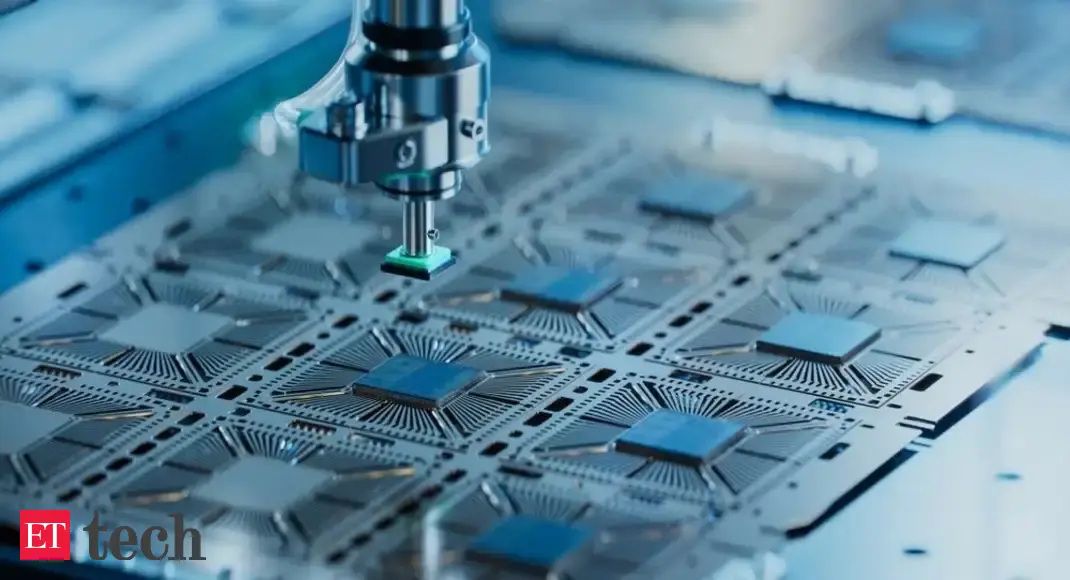

India's ambitions in the semiconductor industry are gaining momentum, aligning with the nation's "Atmanirbhar Bharat" (self-reliant India) goals. The government's support, increasing investments, and strategic collaborations are paving the way for India to become a key player in the global semiconductor market. This coincides with FirstCry's Q1 FY26 report, which shows a narrowing of losses and a rise in revenue, indicating a positive trajectory for the company.
India's Semiconductor Dream Takes Shape
The Indian semiconductor market is projected to reach $100-110 billion by 2030, a significant increase from approximately $38 billion in 2023. This growth is fueled by policy support, rising demand in sectors like consumer electronics, electric vehicles (EVs), and 5G, and manufacturing initiatives. The government approved four new semiconductor projects in August 2025, bringing the total number of sanctioned projects to 10, with a total investment of approximately INR 1.60 trillion (US$18.23 billion). These projects are expected to generate employment for over 2,000 skilled professionals and create indirect job opportunities across the electronics manufacturing ecosystem.
Prime Minister Narendra Modi announced that India is poised to launch its first domestically manufactured semiconductor chip. These initial chips are expected to utilize 28-90 nanometer technology, with applications in automotive, telecommunications, power, and transportation sectors. The India Semiconductor Mission (ISM), launched with an outlay of ₹76,000 crore, provides financial support for investments in semiconductor fabrication, display manufacturing, and chip design.
Several companies are investing in India's semiconductor industry. HCL and Foxconn have formed a joint venture to establish a semiconductor fabrication unit in Jewar, Uttar Pradesh. Micron Technology is establishing an Assembly, Testing, Marking, and Packaging (ATMP) facility in Sanand, Gujarat. Tata Electronics is also planning to set up a chip fabrication unit in Dholera.
The government is also supporting chip design capabilities by extending design infrastructure support to academic institutions and start-ups. In July 2025, the Ministry of Electronics and Information Technology (MeitY) approved 23 chip design projects from start-ups, MSMEs, and academic institutions. These projects focus on applications such as surveillance systems, smart meters, and networking equipment.
FirstCry's Q1 FY26 Report: A Positive Outlook
FirstCry's parent company, Brainbees Solutions, reported a consolidated net loss of INR 66.5 Cr in Q1 FY26, a 12% decline compared to the INR 75.6 Cr loss in the same quarter last year. Operating revenue rose 13% to INR 1,862.6 Cr during the quarter, up from INR 1,652.1 Cr in Q1 FY25. The company's total income increased 14% YoY to INR 1,911 Cr, including other income of INR 48.4 Cr.
Adjusted EBITDA rose 25% to INR 92.7 Cr from INR 74.3 Cr in Q1 FY25. The company also claimed that it turned free cash flow positive in Q1 FY26. However, EBITDA margins experienced a slight decrease. FirstCry's board has approved an additional investment of Rs 19.96 crore in its house of brands subsidiary Globalbees.
FirstCry is focused on strengthening its presence in current markets while exploring new geographies and product categories. The company plans to open a mix of BabyHug and FirstCry exclusive stores, with a focus on non-metro areas. FirstCry's online business is also a significant focus. The company is diversifying its product offerings, with a strong emphasis on its in-house brands.
Synergy and Future Prospects
The growth in India's semiconductor sector is expected to positively impact various industries, including automotive electronics, EVs, telecommunications, and consumer electronics. As India becomes a global player in chip manufacturing, companies like FirstCry, which rely on electronic devices and technologies for their operations and sales, are expected to benefit.
FirstCry's revenue growth, focus on customer experience, and expansion plans position it well in the competitive e-commerce market for baby products. The company's hybrid model of online and offline retail stores enables it to reach a wider consumer base.